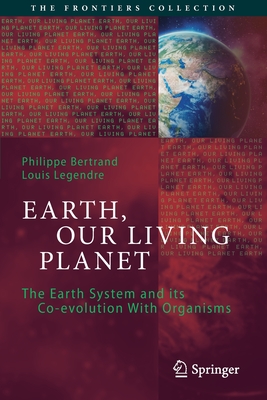Description
The Stage. Planet Earth: Our Home in the Universe 1. Unique Characteristics of Planet Earth
Act 1. Seven Connections that Set the Scene of Life on Earth 2. The Earth Has an Atmosphere: Connection with the Solar System 3. The Temperature Conditions of Earth are Moderate: Connection with the Earth-Moon System and the Earth's Rotation 4. There is Water on Earth, and it is Mostly Liquid: Connection with the Solar System 5. The Earth's Crust Contains the Building Blocks of Life: Connection with the Gravity of Stars and Earth6. The Earth's Temperature is Suitable for Life: Connection with Plate Tectonics 7. The Earth Retains its Atmosphere: Connection with the Solar System and the Earth's Gravity and Magnetic Field 8. Life Thrives on Earth: Connections with the Special Earthly Physical and Chemical Characteristics
Act 2. Four Major Connections that Make Living Organisms and Systems Key Players on the Earth's Scene 9. Connections of Living Systems with the Environment Typically Include Feedbacks and Attractors 10. Living Systems, the Earth's Climate and Plate Tectonics are Connected 11. Living Systems, Free oxygen and Atmospheric and Oceanic Carbon are Connected 12. Living Systems, Free oxygen and Atmospheric and Continental Carbon are Connected 13. Living Systems and Atmospheric, Continental and Oceanic Carbon are Connected
Act 3. Two Major Connections by which Human Actors Disturb the Action of the Play 14. Climate Change: Connections between Human Activities, Carbon, and Greenhouse Gases 15. Ocean Acidification: Connections between Human Activities, Carbon, and Ocean's pH Final act. Connections regulate the Earth System scene 16. Non-Living and Living Components of the Earth System are Regulated by Interacting Connections.
About the Author
Philippe Bertrand has made his research career at CNRS (Centre National de la Recherche Scientifique, the main French research organization), as physical chemist and specialist in paleoceanography and paleoclimatology. His research first focused on the relationships between the activity of coastal upwellings systems and the climatic variations of the last glacial-interglacial cycles. He then became interested in the functioning of the Earth System as a whole, and devoted a book to it (Les attracteurs de Gaia, 2008) and many other publications. For several years, he supervised the research carried out by CNRS in the fields of ocean, atmosphere and climate (around 30 research units and observatories), which further strengthened his interdisciplinary background. It also reinforced his wish to link information from several disciplines to analyze the dynamic complexity and evolution of the Earth System over 4.6 billion years. He is a dedicated amateur photographer of the natural environment. Louis Legendre conducted his career in Canada and in France. He is professor emeritus at Sorbonne University, France, and Laval University, Canada. His fields of research are: marine biogeochemistry, biological oceanography, numerical ecology, and philosophy of science. His work is a blend of theoretical studies, laboratory research, and fieldwork. He tested his theoretical contributions by conducting research in tropical, temperate and polar waters, including the Gulf of St. Lawrence, Arctic waters and polynyas, the Greenland Sea, the Mediterranean Sea, lagoons of coral reefs and atolls of French Polynesia, the Sea of Okhotsk, the Equatorial Atlantic, and lakes. He received several prestigious honours and awards, including membership in three academies of science in Canada, China and Europe. His textbook Numerical Ecology (with Pierre Legendre) is used for research and university teaching all over the world. He enjoys the cultures, includingfood and drink, of countries where he worked and/or travelled extensively, especially (alphabetical order) China, France, Greece, Italy, Japan, Québec and Spain.


